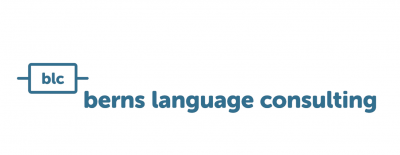Good, concept-based terminology management requires technical coordination, a clear definition and the standardised establishment of preferred terms. However, in order to fully grasp concepts, it is essential to understand and record the relationships to neighbouring concepts. Concept maps with concepts as nodes and relationships as lines are used to represent the relationships between concepts. But what does “relationship between concepts” actually mean and what conceptual relationships exist?
Examples of non-hierarchical conceptual relationships
A distinction can be made between hierarchical and non-hierarchical relationships. Hierarchical conceptual relationships include the generic conceptual relationship and the partial conceptual relationship. Hierarchical relationships make up the majority of term relationships in terminology management. Nonetheless, non-hierarchical term relationships are also essential for the complete coverage of a subject area. Non-hierarchical term relationships include functional relationships and instrumental relationships.
Examples of hierarchical term relationships
Generic term relationship: Car is a vehicle
Partial conceptual relationship: Engine is a part of car
Examples of non-hierarchical conceptual relationships
Functional relationship: combustion is a function of the combustion engine
Instrumental conceptual relationship: Fuel is required for combustion
How do relationships help in terminology work?
As in many other areas of life, relationships can help a lot in terminology work. Some terminology systems offer the function of creating concept maps in parallel with terminology work. This allows concepts to be related to each other as soon as they are entered into the terminology system. This increases the quality of the terminology database, because the assignment of generic and subordinate concepts enables explicit and technically correct definitions to be created. In addition, concept maps facilitate the coordination of new terminology, because the concepts are presented to the terminology circle in context, which makes evaluation much easier. Last but not least, concept maps support knowledge management because the users of the terminology database can grasp the concepts in context much faster and more accurately.

With ontologies, even machines understand relationships
The detection of relationships between concepts not only helps with terminology work, but also opens doors to the semantic network. The transformation of concept maps into ontologies enables not only humans but also machines to understand the relationships between concepts. With the help of ontologies, the machine “understands” the human, e.g. when using semantic applications such as chatbots or language assistants. If the person in the driver’s seat says “I’m freezing to death,” the language assistant in the car understands that it should turn up the heating. This happens by associating the verb “to freeze” in ontology with the measure “to heat”.
The bottom line: Relationships create independence
The more the concept map has been expanded and the more conceptual relationships are maintained, the better a subject area can be understood. This applies not only to humans, but also to machines. Thorough terminology work with the use of conceptual relationships allows the manifold reuse of acquired knowledge and makes semantic applications “independent”. Which relation types are relevant in detail depends on the use case. It is worthwhile from the outset to select the relation types with foresight and conscientiousness when setting up the concept maps.
Photo by Warren Sammut on Unsplash






